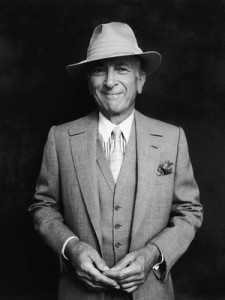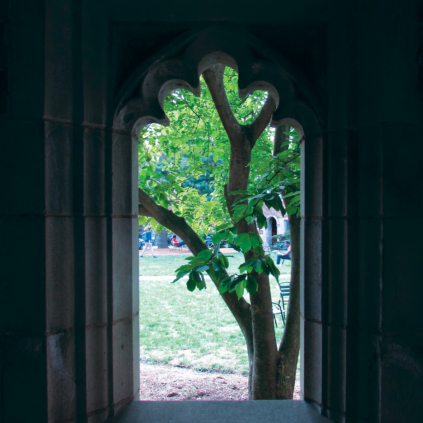
Gay Talese is widely recognized as a pioneer of literary nonfiction, a journalistic genre that uses artful writing to tell factually accurate narratives, the same type of journalism we publish in The New Journal.
Earlier this year, one New Journal editor in Anne Fadiman’s nonfiction class was lucky enough to listen to Talese speak. Since our words cannot do justice to how Talese has shaped the field of literary journalism, we’ll let his speak for themselves.
On nonfiction storytelling and history:
You should never deviate from the facts. You should never use your imagination just because you want to fill in the spaces to make a better story. But even if you adhere to the traditions of serious nonfiction, you can still be a storyteller. Nonfiction is art, but it also has a reference point in history. You don’t have to write about Lincoln to be a historian. You can write about obscure people and be a historian, because obscure people still represent their time.
On note-taking:
Instead of a notepad, I use shirt boards from the dry cleaner. I take a shirt board, and then I get scissors and cut it into note cards that I use like a notepad. I should patent the idea. I usually don’t take notes in front of my subjects; I sneak off and jot down things on these cards. They fit in my suit and don’t stick out like the wires on stupid little journalism pads.
On persistence:
Sometimes I go over the same damn sentence or the same paragraph five dozen times. I start writing in pencil, and then I go to a typewriter and type it over. I just do it again and again, and finally, finally I say, this is about as good as I’m going to do. And then I go to the next thing, and that’s it.
There’s no limit on the time I will spend.
On following up (theory):
If you’re a typical journalist, one who thinks in terms of a single day, you don’t follow up because you’ve done the story. I always want to do a follow-up because there is a continuation. What seemed relevant when you first interviewed them might cease to be relevant, but they move on, they get older, they lose their jobs, they get voted out of office, they get dismissed from the baseball team. Whatever it is—they’re still alive, and they still have something to say.
No matter who you’re writing about, their stories are not going to finish because you’ve finished them. If you want to keep them alive, you can go back, and back, and back, and back. And if you do that artfully enough, you’re doing something creative.
On following up (praxis):
In 1964, I published a book called The Bridge about the building of a bridge between Brooklyn and Staten Island called the Verrazano-Narrows. I spent the better part of three years doing it. In 1960, the first stage began with the eviction of 8,000 people in Brooklyn whose stores or homes happened to be in the pathway to this new bridge. So these people were driven out of a section of Brooklyn called Bay Ridge, and I wrote about that.
It was like a war. Like a bombing. People who had lived there for 30 years, whose children lived there, whose grandchildren may have lived there, were evicted. [The government said]: This bridge had to be built, this bridge was important, this bridge was going to do magnificent things by linking Brooklyn and Staten Island. But for 8,000 people, it meant death to their homes, it meant the eradication of their neighborhood, it meant the severance of relationships.
But that was just the beginning of the story. Because into this neighborhood, into this pathway to the bridge that once would have been filled with homes, walked a whole new cast of characters—all kinds of hard hats and cement mixers. And I started following their stories.
And then finally, over the next year or two, out of the water, out of the Narrows, which is part of the lower Hudson Bay area near the Statue of Liberty, came these struts of steel, came these barges carrying materials, came these people from faraway places: high aerial workers, people who build skyscrapers, people who build bridges, people who take chances in the air, who sometimes fall down and die but don’t even get an obituary because they’re nobodies in a way.
But they’re somebodies to me. They’re like cathedral builders. Who built all those cathedrals you see on your junior year abroad? People like the bridge builders who cut the little rivets and link the steel. You can’t see them do it because they’re operating five hundred, six hundred feet above the water. Their names aren’t on the base of the bridge. But what they do is magnificent, and it’s there if you’re curious and you’re a writer.
I kept in touch with a number of those people, and in 2003, many, many years after that bridge was finished, I looked up the ones who were still alive. I learned for the first time that many of them went on to build the World Trade Center in ’65, ’66. And many of them, I’d say, that on September 11, 2001, many of them were watching television and saw the work they’d spent three years doing crumble into ash between the sunrise and sunset of a single day.
So I started talking to them about what it’s like to see such a thing, even if it’s on television, and they started telling me how embarrassed they were as construction workers when they worked on the building of the Twin Towers. They said that compared to the sturdiness of the bridge, the design was flimsy. In essence, the World Trade Centers were gilded birdcages. Glass birdcages. There was no real solid steel in there.
But the point is, these old bridge-builders that I saw in their lively form back in 1962, ’63, ’64—here in 2000, 2003—had a story.
It’s the story of how different it was working on the towers than the bridge, which would have deflected the terrorists’ planes like a screen door deflecting a moth. But when the planes hit those birdcages, which were shoddy to begin with, flawed in their design, and avaricious in concept—they went down in a matter of six, seven hours. That’s a story.
On the power of microcosms:
Stories can be small and big at the same time.


